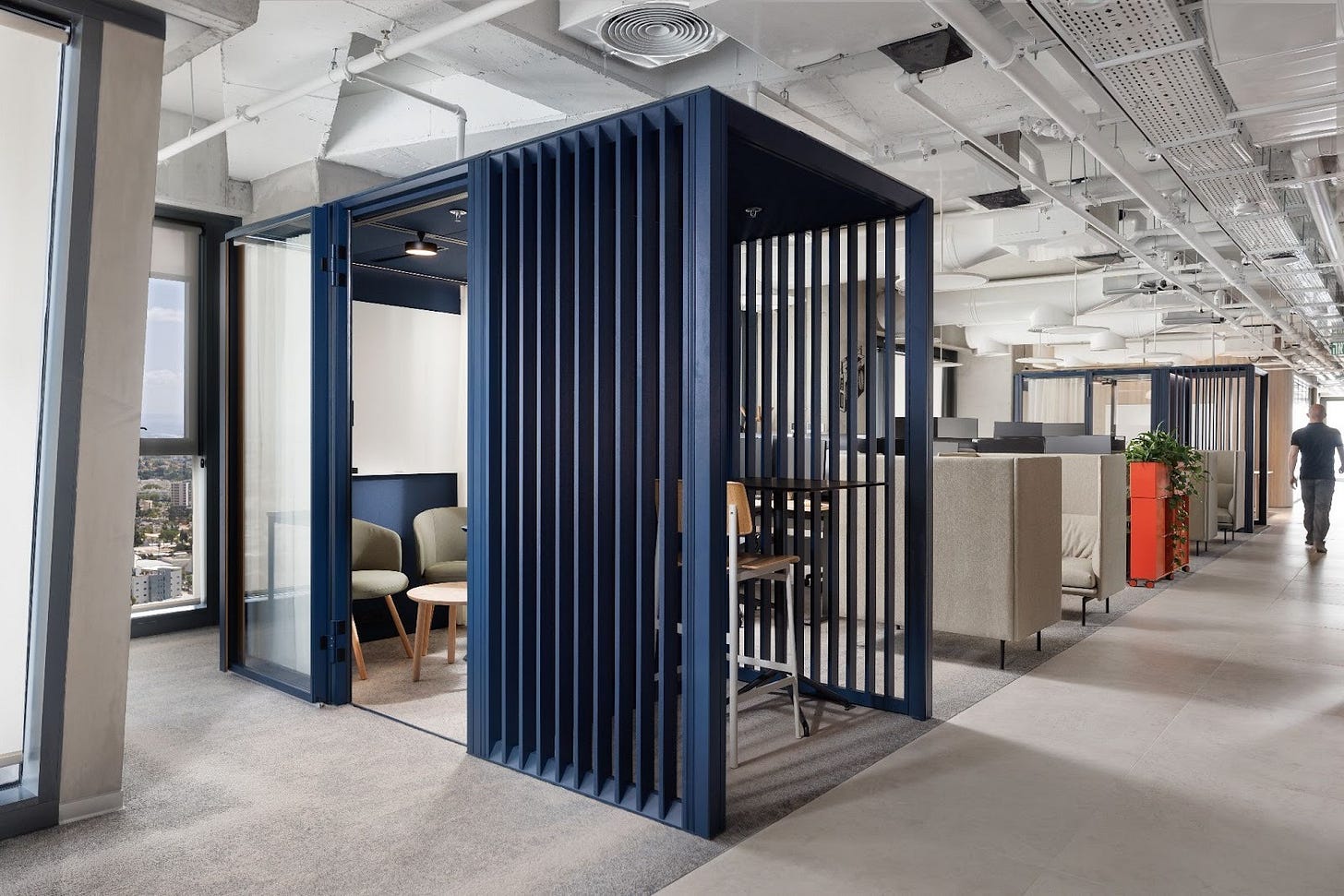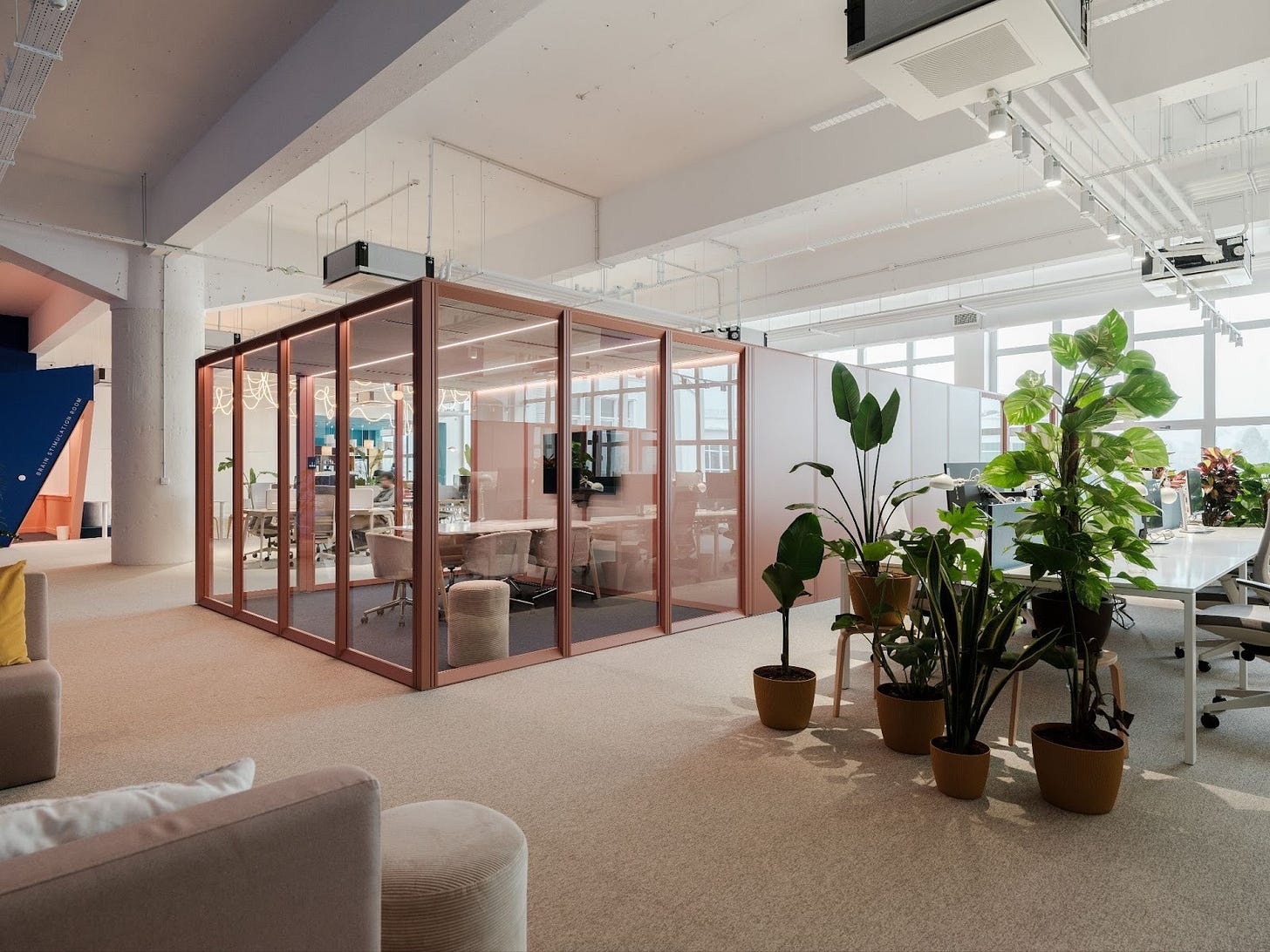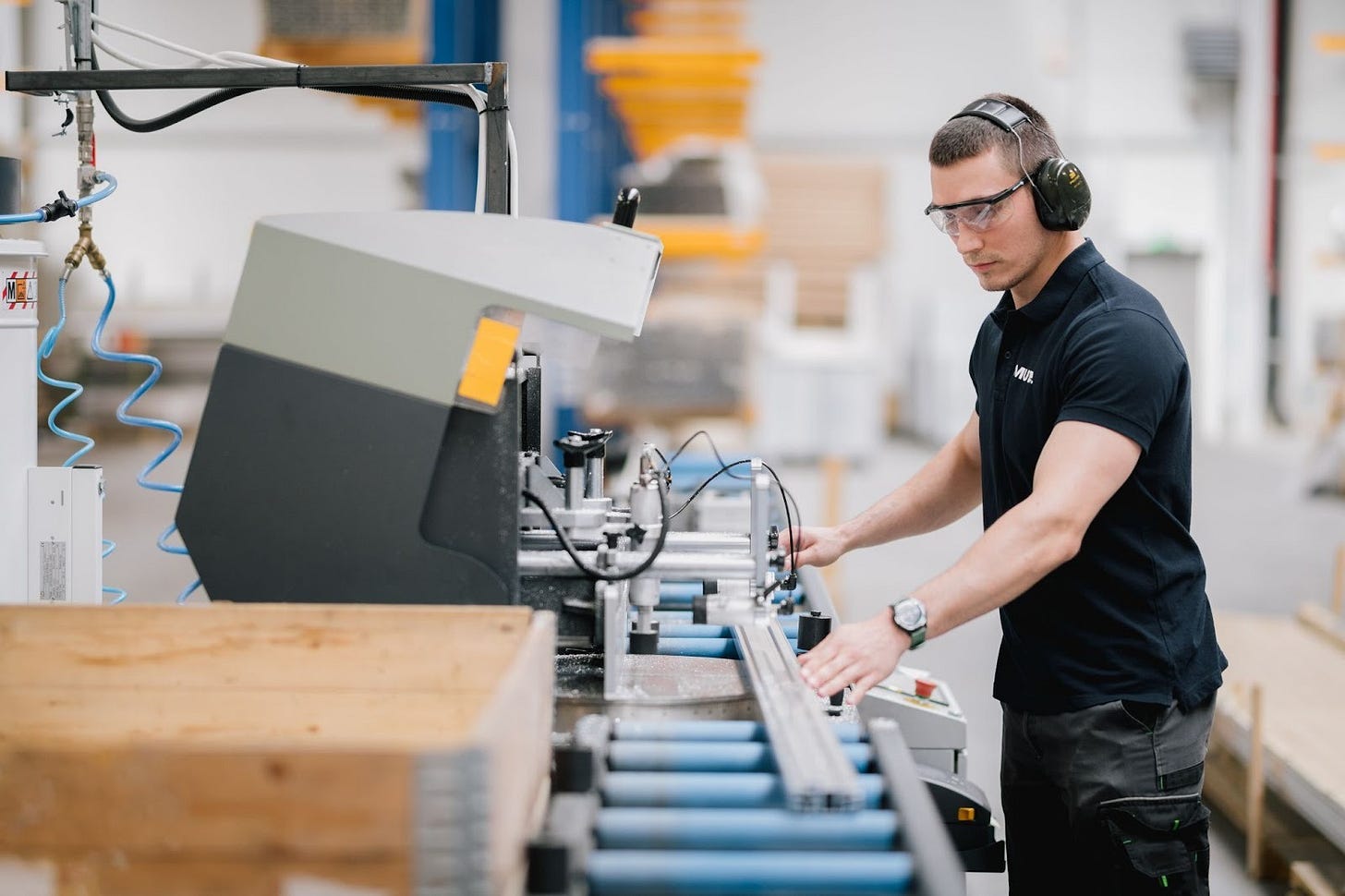What if Workplaces Were Built in Days, Not Months?
How modularity accelerates build, legal, and technical processes; redefining what’s possible in the flexible workspace industry.
Speed has become a competitive advantage in the flexible workplace world. Occupiers increasingly expect faster turnarounds to move into new workplaces quickly, yet traditional fit-outs and adaptation processes can encounter bottlenecks and struggle to keep pace.
Modular solutions not only streamline the build process, dramatically reducing on-site work, delays, and disruption, but also accelerate approval timelines and compliance.
Let’s look at how modularity meets the need for speed, efficiency, and adaptability in coworking and flexible workplaces.
Building smarter and faster
Whether a workplace is being fitted out, modified, or reverted to its original state, building processes traditionally rely on meticulous levels of organisation. Plasterers, decorators, electricians, and other tradespeople must work in sequence; even the slightest delay pushes the entire schedule back even further.
Delayed projects add financial pressure. As you may imagine, materials make up the bulk of fit-out costs; however, labour costs and preliminaries also add up.
Between March and September this year, 67% of contractors expected increasing labour costs, while a further 62% predicted that material costs would rise. Any project delays will incur higher costs.
Even knocking down and rebuilding partition walls isn’t a straightforward process, potentially requiring the relocation of mechanical, electrical, and plumbing (MEP) systems within a space. The cyclical nature of building and knocking down partition walls over the lifecycle of a space, too, means that a workplace may ultimately hold zero residual value over time.
Meanwhile, a modular solution is designed for longevity, where around 90% of the investment goes into the product itself. Modular elements can be reconfigured endlessly to meet evolving needs, transforming a phone booth into a wellness nook or a meeting room, with MEP systems seamlessly integrated within the modules.
Once the prefabricated components arrive, the installation process cuts build times dramatically from months to a matter of days. As needs evolve, modularity also allows rapid modifications to adapt a workplace.
At our Warsaw office, 18 rooms were configured in just two weeks, enabling us to move in three months faster than if we’d relied on traditional construction works, saving on lease costs. Every unit is plug-and-play, requiring no mechanical, electrical, or plumbing system adjustments – saving up to 15% of the total investment. As our modular office can be removed without any reinstatement work, leaving the space move-in ready for the next occupier, we were able to negotiate a better rental deal with our landlord.
Navigating approvals and legal compliance
Beyond the build itself, modularity introduces significant legal benefits. Landlord approval is typically required for traditional fit-outs and modifications that impact the fabric of a building. Rather than waiting for landlord permission, occupiers often rush ahead to start the works, but this comes with legal and financial implications that may cause more delays later down the line.
Meanwhile, internal modular solutions require minimal on-site work during installation, derisking the process. Emma Roche, Partner at Greenwoods Legal LLP, recommends including provisions in the lease to install demountable partitioning that don’t require landlord approval. Modular solutions function similarly to demountable partitioning, as they can simply slot in and out of a space, reducing the need for construction work.
Of course, this always depends on the specific building and lease terms, so it’s a case-by-case matter. However, in theory, an occupier-owned modular solution should give occupiers the freedom to install, adapt, and upgrade their modular units as many times as necessary, significantly cutting down approval waiting times.
There are also the sustainable benefits. Many landlords and coworking operators are focused on future-proofing their buildings; in 2024, 46% of contractors reported that clients increased ESG spending compared to the previous year. Emma explains that leases typically require that any alterations made during the term must maintain or improve the space’s environmental performance. Being built to last, the reusable nature of modularity naturally aligns with these sustainability goals.
Modularity also delivers on the sustainability front at lease end. With minimal on-site construction, there’s little need for reinstatement works to return a space to its original condition. Dilapidation disputes are often a source of friction between landlords and occupiers, but an occupier-owned modular solution can simply be removed and reused in their next workplace, avoiding any drawn-out legal disputes at lease end.
Technical precision and quality control
Modularity accelerates move-ins and relocations, benefitting occupiers too. When relying on traditional fit-outs, occupiers generally can’t access their workplace, which becomes a building site.
There’s the potential risk of exposure to harmful substances; ripping out partition walls and cutting plasterboard releases toxic dust particles (potentially causing life-threatening diseases). Likewise, paints, paint strippers, thinners, and glues may contain volatile organic compounds (VOCs), which significantly impact indoor air quality.
But, as modular solutions are constructed off-site in controlled environments and brought to a workplace for installation, this eliminates exposure to dangerous materials entirely. Mute’s modular units are all manufactured in our factory in Galew, Poland, using a comprehensive building resource planning (BRP) system that integrates material procurement, scheduling, and quality control to ensure efficiency.
Construction works often fall short on the sustainability front, too: strip-outs, demolition, construction, packaging, and unused materials contribute to poorly controlled waste management.
Meanwhile, at Mute, we’re taking waste management seriously: making all our modular systems to order. We cut fabric for upholstered walls precisely, repurposing off-cuts into tote bags. Even our robotic paint machine catches and reuses surplus paint, ensuring nothing goes to waste.
For landlords and coworking operators, delayed construction works may cause significant financial losses from extended vacancies. But as modular solutions are delivered and shipped to their final destination on time, the time needed for technical validation, inspections, and adjustments is dramatically reduced.
With modularity, a workplace can remain operational, even during installation processes, causing minimal disruption and waiting time for moving everyone into a space.
Built to move, designed to last
While still early in adoption, modularity presents a long-term investment opportunity: a system that can be reconfigured, reused, and moved between spaces, protecting value over time. For occupiers, it offers flexibility and speed; for landlords and coworking operators, it reduces risk, cost, and downtime.
This thought leadership content is brought to you by:
Explore how Mute is leading the adaptable office architecture evolution, offering modular solutions to futureproof office investments while significantly reducing construction time, costs, and CO₂ emissions.









